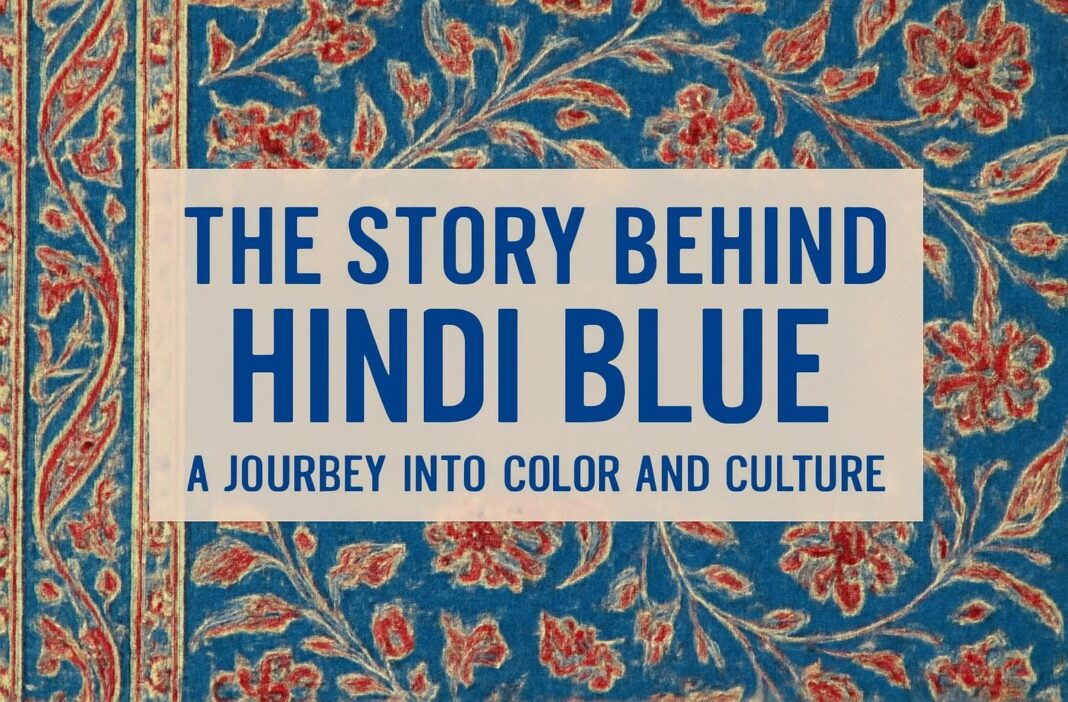Colors have a magical way of influencing emotions and telling stories without words. One such color, Hindi Blue, is deeply intertwined with the culture, art, and history of India. This color is more than just a shade—it’s a reflection of centuries-old traditions and artistic expressions that continue to shape Indian identity today. In this article, we’ll explore what makes Hindi Blue unique, its cultural significance, and how this color has influenced everything from fashion to architecture.
What Exactly is Hindi Blue?
At first glance, Hindi Blue might seem like any other blue. However, this specific shade carries with it a rich cultural history that is deeply rooted in Indian art and traditions. Hindi Blue refers to a particular deep, vibrant blue often found in Indian textiles, pottery, and even architecture. It’s not just a color, but a symbol of artistry, heritage, and the long-standing relationship between India and its natural resources, like indigo.
This rich blue hue can often be seen in traditional Indian block prints, where artisans skillfully stamp intricate designs onto fabric. The striking color is typically paired with contrasting shades like red, orange, and yellow, creating vibrant and lively designs that stand out in markets, homes, and boutiques around the world.
The History of Hindi Blue: A Color with Deep Roots
To understand the significance of Hindi Blue, it’s important to explore its history. The use of blue dye in India dates back over 2,000 years. Hindi Blue is strongly associated with indigo, a plant that produces a rich, deep blue color. Historically, indigo was grown in the Indian subcontinent and was essential for producing dye used in textiles.
Rajasthan and Gujarat are two Indian regions where the indigo-dyeing tradition flourished. These areas became the heart of India’s indigo industry, and the color eventually became a symbol of cultural identity. Notably, during the British colonial period, indigo became a key export product. This helped shape the local economy but also led to significant social changes as farmers were forced into indigo cultivation, resulting in the infamous Indigo Revolt of 1859.
Hindi Blue in Indian Art and Design
Hindi Blue has been a staple in Indian art, particularly in textile design. One of the most well-known practices is the art of block printing, where artisans carve intricate patterns into wooden blocks and stamp them onto fabric. The fabric is then dyed with indigo to achieve the distinct Hindi Blue.
In Rajasthan, for example, you can find beautiful blue textiles that are created through block printing methods that have been passed down through generations. These textiles often depict vibrant floral and geometric patterns that are rich in symbolism, blending cultural heritage with the creativity of the artisans.
Another area where Hindi Blue stands out is in pottery. Rajasthani pottery, for instance, often features intricate blue designs on ceramic plates, cups, and bowls, reflecting the deep connection the color has to the region’s cultural practices.
The Role of Hindi Blue in Indian Fashion
When we think of Hindi Blue in fashion, the first image that often comes to mind is the traditional saree. This iconic garment, worn by women across India, often features vibrant hues of Hindi Blue, making it an ideal choice for special occasions like weddings, festivals, and cultural celebrations.
The significance of Hindi Blue in fashion goes beyond traditional wear. Over the years, it has made its way into contemporary Indian fashion collections as well. Designers have incorporated the color into modern garments, including chic dresses, shirts, and accessories, making it a color that bridges the gap between tradition and modernity.
One of the most notable modern uses of Hindi Blue in fashion is through the global popularity of Indian-inspired clothing. Designers like Sabyasachi Mukherjee and Anita Dongre have included shades of Hindi Blue in their collections, using the color to evoke a sense of royalty, grace, and sophistication.
Hindi Blue and Indian Architecture
Apart from textiles and fashion, Hindi Blue also plays a significant role in Indian architecture, particularly in the city of Jodhpur, Rajasthan. Known as the “Blue City,” Jodhpur is famous for its buildings that are painted in various shades of blue, creating a stunning visual effect that draws tourists from around the world.
The use of blue paint in Jodhpur has both practical and cultural significance. Traditionally, blue was used by Brahmin families to mark their homes, signaling both their caste and status. Over time, the color has come to symbolize the city itself. The coolness of blue is also believed to help regulate the temperature in the scorching heat of the desert.
Why Hindi Blue Remains Popular Today
Despite its centuries-old origins, Hindi Blue remains relevant in today’s world. The color’s versatility and timeless appeal have kept it in demand across multiple fields. Its calming and serene quality continues to captivate people, whether it’s used in home decor, fashion, or art.
The rise of sustainable and eco-conscious fashion has also contributed to the popularity of Hindi Blue. As consumers seek out more natural and authentic products, the use of traditional dyes, like indigo, has made a comeback in contemporary design. This has breathed new life into the color, ensuring that its legacy endures.
How to Incorporate Hindi Blue Into Your Own Life
Want to bring the beauty of Hindi Blue into your life? There are plenty of ways to do so, from fashion to home decor. A Hindi Blue saree or kurta can be an elegant addition to your wardrobe, perfect for a wedding or festive event. In your home, try incorporating the color with textiles like pillows, curtains, or rugs to add warmth and richness to any room.
For those who enjoy the world of art and DIY projects, consider adding Hindi Blue accents to your own creations. Whether it’s through painting, pottery, or even digital art, this color adds a vibrant and timeless element to any project.
Conclusion
Hindi Blue is more than just a color; it is a symbol of India’s rich cultural heritage and its ongoing evolution. From its historical roots in indigo dyeing to its modern-day presence in fashion, architecture, and art, this color continues to inspire creativity and evoke a sense of beauty and tradition. Whether you’re exploring the streets of Jodhpur or incorporating it into your wardrobe, Hindi Blue is a color that will always have a special place in the hearts of those who appreciate its depth and history.



